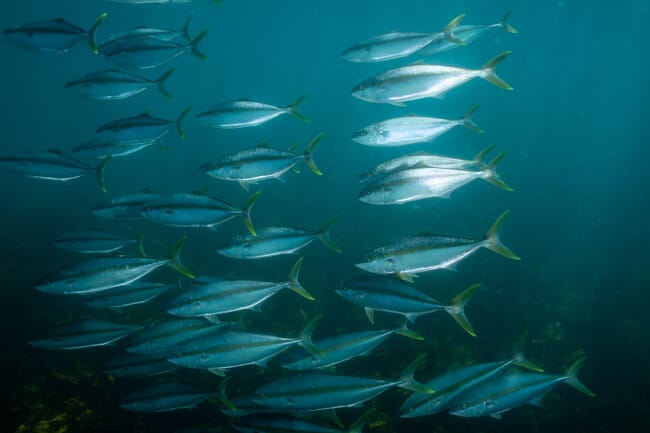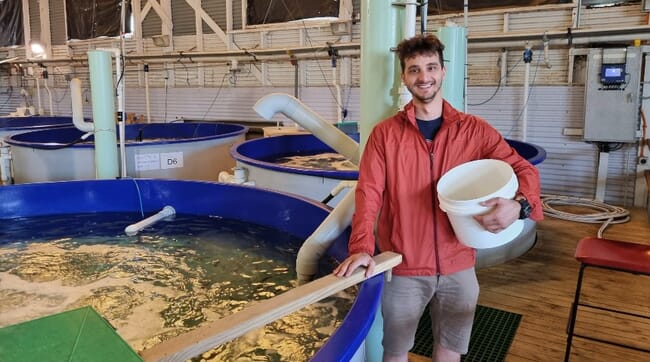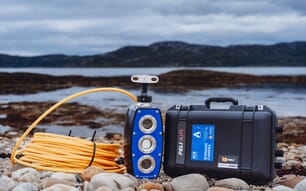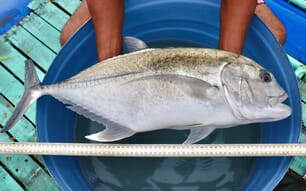A new research project at Murdoch University is setting the fast-growing global aquaculture industry in its sights.

Just like beef and lamb, fish eating quality is partially determined by intramuscular fat content - but identifying which fish will yield the biggest and best-tasting fillets while still alive is currently not feasible.
Dr Fiona Anderson, from the Centre for Animal Production and Health in the Food Futures Institute, recently secured a Research & Innovation Seed Funding Grant from the University to kickstart a PhD project by young researcher Dino Milotic.
“The value and quality of a fish is determined by fillet size and fat content,” Dr Anderson said.
"But at the moment, there’s no real way to measure those two traits other than to fillet the fish, weigh the fillet and then chemically analyse the fillet for intramuscular fat", Anderson said.
“The aim of this new research project is to develop a rapid and cheap method for measuring fillet fat percent while fish are alive, using Computed Tomography (CT) scanning as the gold standard tool for rapid assessment.”
For his project, Mr Milotic will have access to Yellowtail Kingfish at the Department of Primary Industries and Regional Development fish hatchery in Fremantle. He will analyse pixels from CT images of the Yellowtail Kingfish and allocate them as either lean tissue, fat, or bone. If a successful testing method is developed, fish could be scanned for intramuscular fat percentage and fillet weight while alive.
These genetically superior fish could then be retained for breeding stock or harvested for eating at the optimum time in their growth cycle.

© Dino Milotic
Dr Anderson said having the ability to trade and breed based on fish quality would be a game-changer in the industry.
“There’s a potential to repeat the same story for fish that Murdoch have played in the sheep and beef industries - to apply the same technologies and actually develop a trait to trade on,” she said.
“At the moment you can’t readily breed or trade fish based on intramuscular fat content and fillet size. Having a system to guarantee fish quality could change the way we breed and trade fish and potentially, offer the industry a real competitive advantage.”




